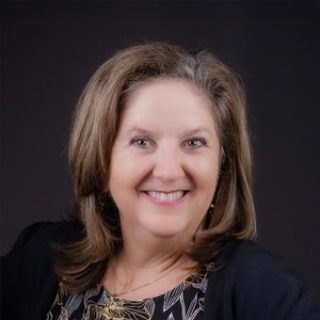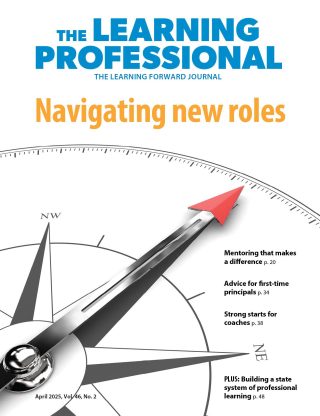PLCs can get stuck. Research supports the contention that professional learning communities (PLCs) are a “path to change in the classroom” (DuFour, 1997). Teachers treading this path, however, can encounter obstacles or plateau as a result of five common challenges: incoherence, insularity, unequal participation, congeniality, and privacy.
Fortunately, teachers and the administrators who support them can overcome these obstacles with self-reflection and intentionality. Here, I describe how these five challenges play out in schools. In the pdf version of this article, you’ll find a tool in that provides discussion questions to help PLC members and facilitators reflect on these challenges and address them in their own work.
Challenge 1:
Promote coherence and follow-through.
Traditional professional development is often too episodic and incoherent to impact teachers. Most teachers have experienced one-shot presentations from experts they’ll never see again on a topic they will never address again.
PLCs provide an alternative to this pattern. However, they do not automatically create more coherent and connected opportunities for teacher learning.
For example, at one California high school, teachers and principals engaged in Critical Friends Groups that demonstrated sophisticated use of discussion protocols. Teachers reflected on their own work and openly shared their teaching practices and dilemmas (Curry, 2008).
But because teachers chose the focus of each protocol-guided discussion, their conversations were broad-ranging and prevented sustained exploration of any one issue (Curry, 2008). Teachers never got to revisit past conversations or learn from colleagues’ efforts to change their instruction.
Challenge 2:
Overcome insularity to ensure new input.
Continually meeting with the same group of colleagues can create good outcomes — like trust and shared routines — but it can also produce group-think. For example, in one of the Critical Friends Groups described previously, teachers developed “a privileged repertoire of oft-repeated instructional suggestions” (Curry, 2003, p. 257) that amounted to “self-evident pedagogic strategies” (Curry, 2003, p. 268) that limited innovative thinking. The group’s way of referencing favored pedagogies and buzzwords seemed to reinforce rather than challenge assumptions.
Challenge 3:
Ensure equal participation and maximal learning.
In our classrooms, many teachers want to equalize and maximize student participation because students who participate achieve deeper, more lasting learning and because classrooms are richer when we hear all voices. The same is true in our work with colleagues. PLCs where all of the members raise questions, offer their interpretation of data, or share advice create the most opportunities for everyone to learn.
In some PLCs, some participants rarely speak. In some PLCs, new teachers are told that in “your first year, don’t say anything, just sit there and be quiet” (Levine et al., 2015). In other PLCs, individuals are quiet because they are shy by nature or don’t yet feel safe taking the risks involved in making their thoughts and teaching public. Some teachers may limit their PLC participation because they don’t see how their contributions will benefit them or others.
Challenge 4 :
Move past congeniality.
Most teachers are cordial and caring with each other. That can be good, producing comfort, solidarity, and trust. But it can also be a problem. A culture of niceness limits growth if teachers don’t also agree to give each other appropriate moments — and degrees — of candor (Evans, 2012).
Many of us find it easier to avoid exploring moments of disagreement or conflict, especially if a teacher’s starting premise is that we are all free to teach as we want and that it is not our role to challenge each another. However, PLCs thrive when we take responsibility for helping each other learn and improve.
Indeed, effective PLCs are premised on the notion that we will promote more student success if we align our work with one another’s and with the priority initiatives in our school and district.
At one Washington state high school, 24 colleagues — mostly English and social studies teachers — discovered the benefits of open disagreement during their monthly meetings to develop interdisciplinary humanities curriculum (Grossman, Wineburg, & Woolworth, 2001).
At first, they maintained the kind of surface harmony that typify the way many teachers get along (Achinstein, 2002). As their intensive work raised long-submerged differences and disagreements, the teachers rolled their eyes and ridiculed one another privately, yet the teachers would not address their tensions openly with each other.
In the end, they tolerated more open conflict and found value in their differing views. Their movement from a superficial “pseudo-community” to more authentic engagement with each other helped them produce interdisciplinary curriculum and achieve insights they could not have gained on their own (Grossman, Wineburg, & Woolworth, 2001).
Challenge 5:
Deprivatize practice.
Many teachers have gotten used to having the privacy and autonomy to teach the way they want, with little input from others. This culture of teacher isolation has made it hard to see alternatives and invite colleagues to offer help.
One 9th-grade team of teachers in California intentionally broke these norms of privacy while creating a small school within their comprehensive high school. They set up a structure for daily teacher collaboration among a grade-level team. This gave them time to learn with and from each other in several ways.
For example, on Mondays, they shared data about attendance and student achievement to gain insights about how students were doing academically across classes. On Thursdays, they used discussion protocols to examine their teaching (Levine & Marcus, 2010) and plan for changes in their instruction. The protocols nudged colleagues to get involved in collaboratively solving problems with their peers.
GIVE YOUR WORK GREATER IMPACT
The challenges identified above emerged from research that I and others have done while watching teacher communities closely over long periods of time. PLCs can address these challenges by using the reflection tool on the following pages.
Use the tool to consider and discuss ways you could be creating even more learning for each other and, thus, for your students. I know personally that this work can be ego-threatening in the short term. But it is well worth the temporary discomfort.
You invest much time and energy in your PLC throughout a year. Help each other consider ways to give your work greater impact. Be gentle, supportive, and celebratory of each other as you agree to take more risks.
References
Achinstein, B. (2002). Conflict amid community: The micropolitics of teacher collaboration. Teachers College Record, 104(3), 4212-4455.
Curry, M.W. (2003). Critical Friends: A case study of teachers’ professional community in a reforming high school. Dissertation, University of California at Berkeley, Berkeley, CA.
Curry, M.W. (2008). Critical Friends Groups: The possibilities and limitations embedded in teacher professional communities aimed at instructional improvement and school reform. Teachers College Record, 110(4), 733-774.
DuFour, R. (1997). Moving toward the school as a learning community. Journal of Staff Development, 18(1).
Evans, R. (2012). Getting to no: Building true collegiality in schools. Independent School, 71(2). Available at www.nais.org/Magazines-Newsletters/ISMagazine/Pages/Getting-To-No.aspx.
Grossman, P., Wineburg, S., & Woolworth, S. (2001). Toward a theory of teacher community. Teachers College Record, 103(6), 942-1012.
Levine, T.H. & Marcus, A.S. (2010). How the structure and focus of teachers’ collaborative activities facilitate and constrain teacher learning. Teaching and Teacher Education, 26(3), 389-98.
Levine, T., Mulcahy, P., Bengston, J., Didden, A., Esposito, A., Valacer, A., … Wilson, D. (2015). Learning to lead: Exploring how 1st-6th year teachers develop informal leadership. NERA Conference Proceedings 2015. Available at opencommons.uconn.edu/nera-2015/10.
Recent Issues
LEARNING DESIGNS
February 2025
How we learn influences what we learn. This issue shares essential...
BUILDING BRIDGES
December 2024
Students benefit when educators bridge the continuum of professional...
CURRICULUM-BASED PROFESSIONAL LEARNING
October 2024
High-quality curriculum requires skilled educators to put it into...
LEARNING TO PIVOT
August 2024
Sometimes new information and situations call for major change. This issue...












